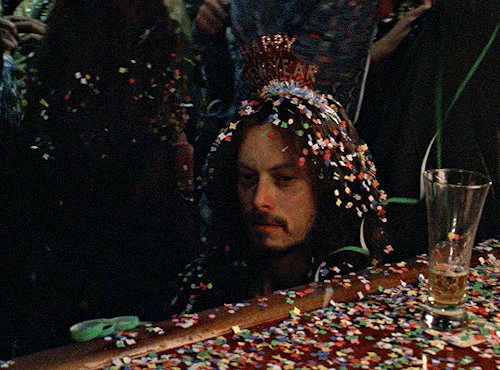I Loved It, You Are Very Talented, Thank You
I loved it, you are very talented, thank you
I don't know why, but I would love to see more sektor / subzero, especially from sektor's point of view on their relationship. (sorry for my English)
Done! ^_^ I hope you enjoy it!
More Posts from Annatextos and Others



31 Characters For October
Day 25 - Carrie White from Carrie (1976)
Paixão Eterna
Perante o mundo eu falo o meu amor,
o grande sentimento que tenho por você,
a mais pura de todas as minhas paixões,
uma chama que queima em meu peito,
o fogo eterno do meu afeto.
English:
Eternal passion
Before the world I speak my love,
the great feeling I have for you,
the purest of all my passions,
a flame that burns in my chest,
the eternal fire of my affection.


HAPPY NEW 2021 YEAR, TUMBLR!

Festive bulb 🎄










COPA America Champions :
Brazil🇧🇷
Ano Novo
Esse foi um grande ano cheio de conquistas,
derrotas, sentimos alegrias e tristezas, tivemos pessoas que nos deixaram,mas que para sempre o seu legando estará em nossos corações, também pessoas que nasceram para alegrar as nossas vida, foi um ano cheio de loucuras, mais no fim temos que nos consentra nas novas coisas que viram, que sempre lembrar de ter esperança.
O sangue vermelho da rosa branca
Uma tarde nos jardins, mais especificamente em um campo das mais belas rosas brancas, eu estou com você, e quase uma imagem inreal, a atmosfera é melancolia e fria, de repente nós nos olhamos então vejo a sua alma, eu sei quem você é , sei o fato que você pode ser perigoso, mas por algum motivo eu não ligo, pois o meu coração bate por você. Então nós nos abraçamos e de repente sinto uma dor em meu pescoço,o meu sangue começa a fluir e a correr pelo meu corpo até manchar as rosas com ele.
English:The red blood of the white rose
An afternoon in the gardens, more specifically in a field of the most beautiful white roses, I am with you, and almost an image inreal, the atmosphere is melancholy and cold, suddenly we look at you then I see your soul, I know who you are I know the fact that you can be dangerous, but for some reason I do not care, because my heart beats for you. Then we embrace and suddenly I feel a pain in my neck, my blood begins to flow and to run through my body to stain the roses with it.
Emerald Spectacles from India, c. 1620-1660 CE: the lenses of these spectacles were cut from a single 300-carat emerald, and it was believed that they possessed mystical properties

These eyeglasses are also known by the name "Astaneh-e ferdaws," meaning "Gate of Paradise," based on the perception of the color green as a symbol for spiritual salvation/Paradise. This was a common belief in Mughal-era India, where the spectacles were made.

The lenses were crafted from two thin slices of the same emerald. Together, the lenses have a combined weight of about 27 carats, but given the precision, size, and shape of each lens, experts believe that the original emerald likely weighed in excess of 300 carats (more than sixty grams) before it was cleaved down in order to produce the lenses. The emerald was sourced from a mine in Muzo, Colombia, and it was then transported across the Atlantic by Spanish or Portuguese merchants.
Each lens is encircled by a series of rose-cut diamonds, which run along an ornate frame made of gold and silver. The diamond-studded frame was added in the 1890s, when the original prince-nez design was fitted with more modern frames.

The emerald eyeglasses have long been paired with a second set of spectacles, and they were almost certainly commissioned by the same patron. This second pair is known as Halqeh-e nur, or the "Halo of Light."
The Halo of Light features lenses that were made from slices of diamond. The diamond lenses were cleaved from a single stone, just like the emerald lenses, with the diamond itself being sourced from a mine in Southern India. It's estimated that the original, uncut diamond would have weighed about 200-300 carats, which would make it one of the largest uncut diamonds ever found.

These lenses are so clear and so smoothly cut that it sometimes looks like they're not even there
Both sets of spectacles date back to the mid-1600s, and it's generally believed that they were commissioned by a Mughal emperor or prince. The identity of that person is still a bit of a mystery, but it has been widely speculated that the patron was Shah Jahan -- the Mughal ruler who famously commissioned the Taj Mahal after the death of his wife, Mumtaz Mahal. Shah Jahan did rule as the Mughal emperor from about 1628 to 1658.
The emerald and diamond lenses may have been chosen for symbolic/cultural reasons, or they may have been chosen simply because they're pretty and extravagant; their meaning/purpose is unclear. Experts do believe that the eyeglasses were designed to be worn by someone, though.
It was believed that the spectacles had spiritual properties, like the ability to promote healing, ward off evil, impart wisdom, and bring the wearer closer to enlightenment. Those beliefs are often related to Indic and Islamic traditions, some of which ascribe spiritual and/or symbolic traits to emeralds and diamonds. Emeralds can be viewed as an emblem of Paradise, divine salvation, healing, cleansing, and eternal life; diamonds are similarly associated with enlightenment, wisdom, celestial light, and mysticism.

The Gate of Paradise and the Halo of Light were both kept in the collections of a wealthy Indian family until 1980, when they were sold to private collectors, before going on auction once again back in 2021. They were valued at about $2 million to $3.4 million per pair.
Sources & More Info:
Sotheby's: Mughal Spectacles
Architectural Digest of India: At Sotheby's auction, Mughal-era eyeglasses made of diamond and emerald create a stir
Only Natural Diamonds: Auspicious Sight & the Halqeh-e Nur Spectacles
The Royal Society Publishing: Cleaving the Halqeh-Ye Nur Diamonds
Gemological Institution of America: Two Antique Mughal Spectacles with Gemstone Lenses
Manuscript: From Satan's Crown to the Holy Grail: emeralds in myth, magic, and history
CNN: The $3.5 million Spectacles Said to Ward off Evil
BBC: Rare Mughal Era Spectacles to be Auctioned by Sotheby's
-
 annatextos reblogged this · 4 years ago
annatextos reblogged this · 4 years ago -
 annatextos liked this · 4 years ago
annatextos liked this · 4 years ago -
 summertrapped reblogged this · 4 years ago
summertrapped reblogged this · 4 years ago
